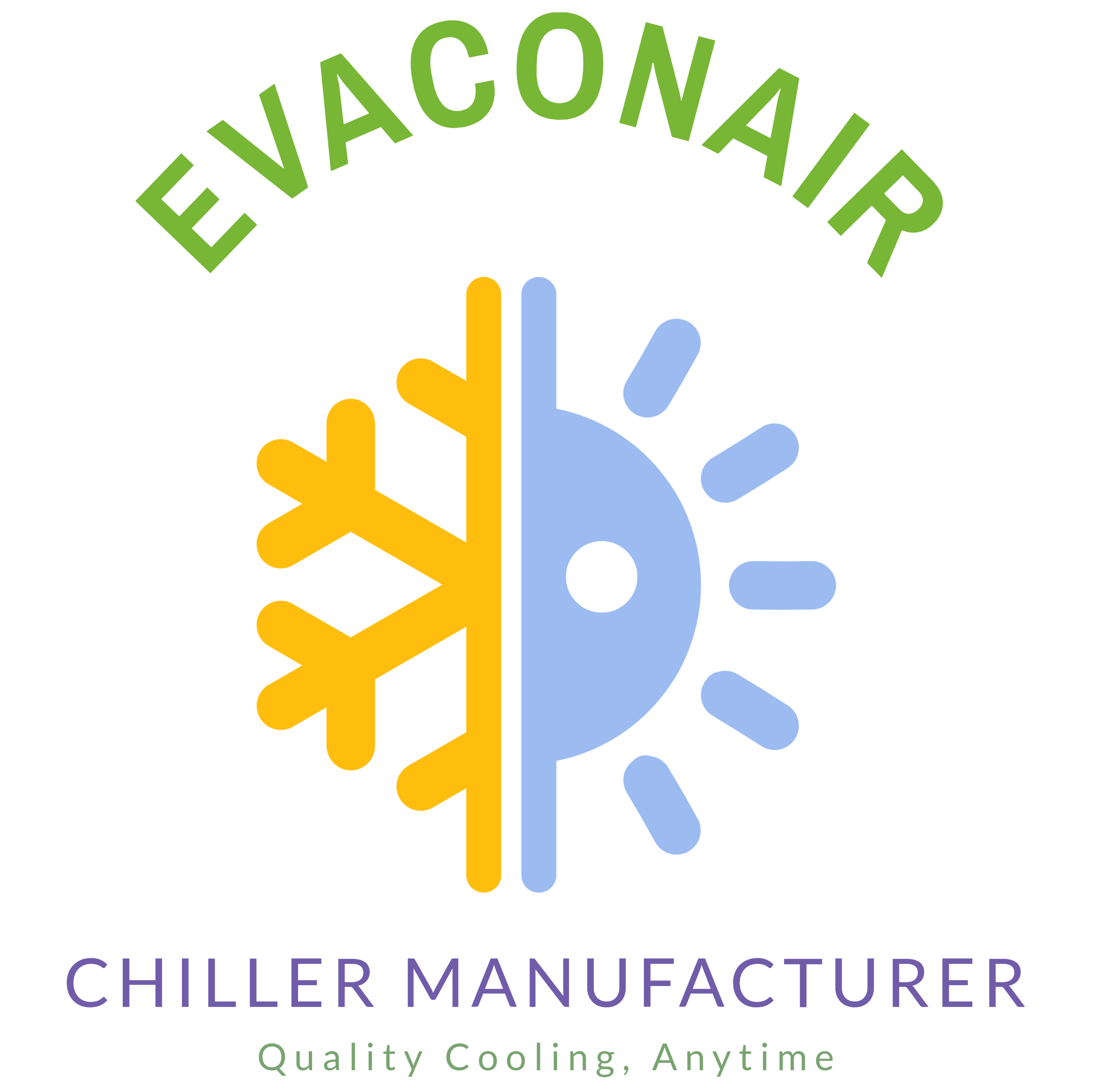Blog
How to Maintain Chiller Temperature
Maintaining the correct temperature in a chiller is crucial for ensuring optimal performance, energy efficiency, and the longevity of the system. Proper temperature control prevents overheating, ensures consistent cooling, and supports the various processes that rely on the chiller.
Tips to Maintain Chiller Temperature
1. Regular Monitoring and Calibration
- Monitor Temperature Settings: Regularly check and monitor the temperature settings on your chiller. Ensure that the setpoint temperature aligns with the cooling requirements of your application. For example, if you’re using an Air-Cooled Water Chiller, the desired temperature should be maintained according to the specific needs of your system.
- Calibrate Sensors and Controls: Periodically calibrate the temperature sensors and controls to ensure they provide accurate readings. Proper calibration helps prevent deviations from the set temperature, which can lead to inefficiencies.
2. Maintain Proper Refrigerant Levels
- Check Refrigerant Levels: Regularly inspect and maintain the refrigerant levels in your chiller. Low refrigerant levels can lead to insufficient cooling and higher energy consumption. This is particularly important in systems like the Water Cooled Screw Chiller.
- Inspect for Leaks: Periodically check for refrigerant leaks, as leaks can significantly impact the chiller’s ability to maintain the desired temperature. Repair any leaks promptly to avoid performance issues.
3. Clean and Maintain Heat Exchangers
- Evaporator and Condenser Cleaning: Clean the evaporator and condenser coils regularly to remove dirt, scale, and debris. Clean coils improve heat transfer efficiency, helping maintain the chiller’s temperature. In Air Cooled Screw Chillers, cleaning the coils ensures that air can flow freely, preventing temperature fluctuations.
- Water Quality Management: For water-cooled systems like the Water Cooled Water Chiller, ensure that the water used in the cooling tower is treated and free from contaminants. Poor water quality can cause scaling and reduce the efficiency of heat exchangers.
4. Optimize Load Management
- Match Cooling Load to Chiller Capacity: Ensure that the chiller is operating within its designed cooling capacity. Operating the chiller under low or excessive loads can lead to temperature instability. Properly match the chiller capacity to the cooling load for optimal performance.
- Use Variable Speed Drives (VSDs): If possible, install variable speed drives on compressors, pumps, and fans. VSDs allow for better control of the chiller’s output, maintaining a stable temperature while reducing energy consumption.
5. Routine Maintenance
- Regular Maintenance Schedule: Adhere to a regular maintenance schedule that includes checking the compressor, evaporator, condenser, and auxiliary equipment like Mold Temperature Controllers and Dehumidifiers. Routine maintenance helps identify and address issues that could affect temperature control.
- Component Inspection and Replacement: Regularly inspect and replace worn-out components such as filters, belts, and seals. This ensures that all parts of the chiller operate efficiently, maintaining consistent temperatures.
6. Environmental Control
- Control Ambient Temperature: For Air-Cooled Water Chillers, ensure that the ambient temperature around the chiller remains within the recommended range. Excessive heat can strain the chiller’s cooling capacity and lead to temperature fluctuations.
- Humidity Control: Integrate humidity control solutions like Dehumidifiers to manage moisture levels, especially in environments where high humidity can affect the cooling process.
Conclusion
Maintaining the correct chiller temperature is essential for the efficient and reliable operation of your cooling system. By following the above tips, such as regular monitoring, maintaining refrigerant levels, and routine maintenance, you can ensure that your chiller operates at its best. Whether you’re using an Air-Cooled Screw Chiller in Ahmedabad or a Water Cooled Screw Chiller in Ahmedabad, these practices will help maintain stable and consistent cooling temperatures. For more information and expert support, visit our products page.
